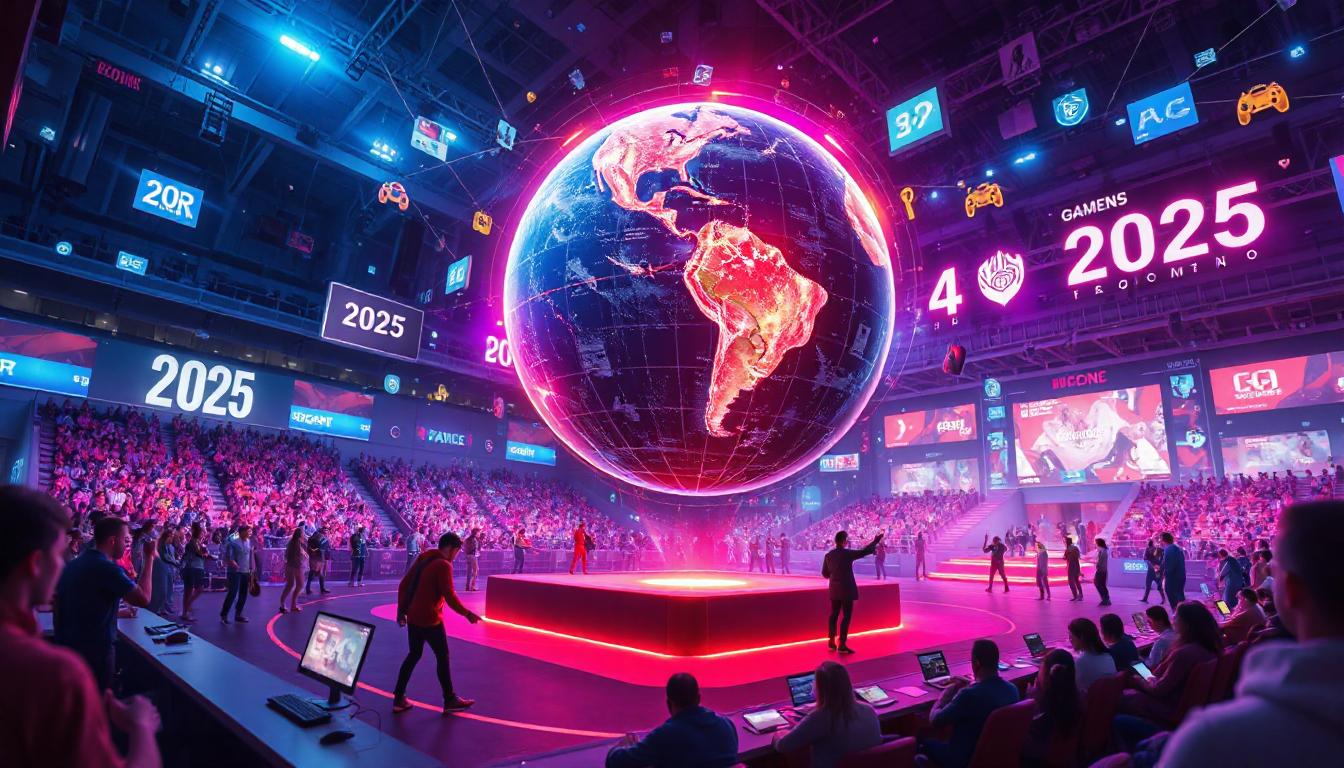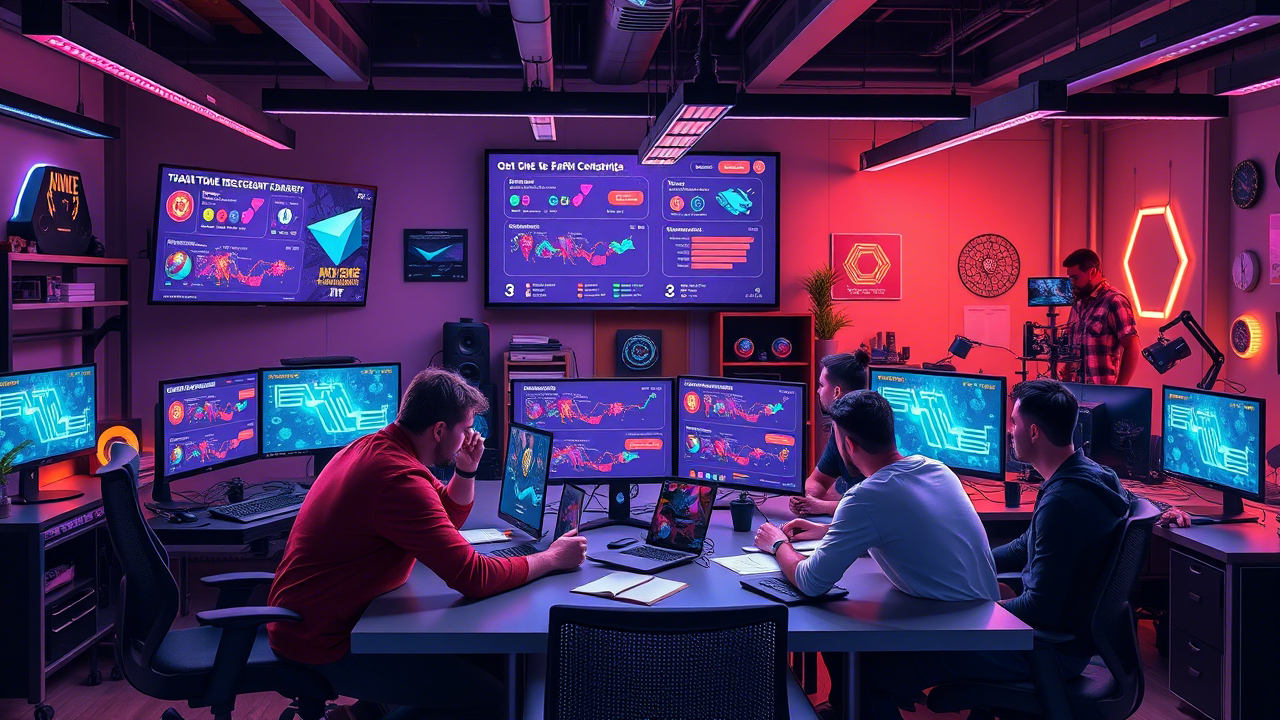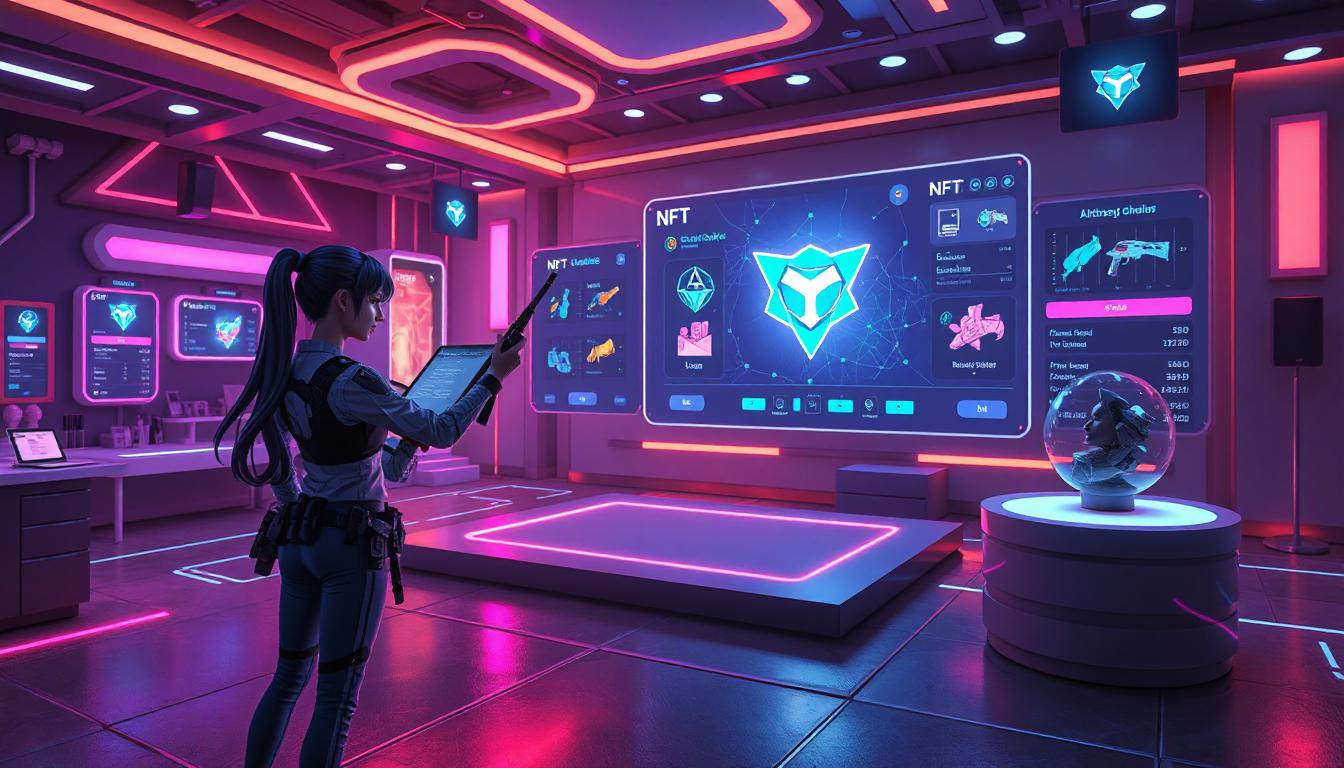The game industry is experiencing a major shift. This could be the most significant and game-changing period in its history. Have you considered how video games will impact your daily life by 2025? The future of gaming is limitless; new technologies such as augmented reality (AR) and artificial intelligence (AI) are aiding the development of our favorite games. Based on growth statistics of the gaming industry to forecasts of gaming industry revenues, this article examines key trends that are influencing the direction of the industry—providing a highly informative game industry snapshot for both enthusiasts and business people.
Gaming Industry Growth: A Deep Dive into Market Expansion
During the last ten years, gaming experienced explosive, unique growth and has become the powerhouse of entertainment in the world.A study by Newzoo predicts that the gaming industry could earn $211 billion by 2025. This increase is due to new technology and the growing popularity of mobile games.
Key Drivers of Growth: Key Drivers of Growth:
- Mobile Gaming: Mobile games account for over 50% of the gaming industry’s total earnings. They will remain the biggest and most important part of the market.
- Esports Expansion: The number of people watching esports is predicted to hit 600 million globally. It’s already a huge source of income, thanks to profitable sponsorships and advertising deals. These benefits help the gaming industry a lot.
- Cloud Gaming: Programs like Google Stadia and NVIDIA GeForce Now are making high-end gaming more accessible by eliminating the need for expensive hardware.
The rise of digital platforms like Steam and the Epic Games Store has made it simpler for people to discover and buy video games online. This shows that gaming remains highly popular. But why do I believe mobile gaming has become the dominant force in this market?
Future of Game Development: Where Innovation Meets Creativity
In the future, making games will mix advanced technology with creative storytelling. Game creators are using AI to build more exciting worlds and customize experiences for each player. For example, procedural content generation helps developers create big, changing game environments that adjust based on how players play.
Trends Shaping Game Development: Trends Shaping Game Development:
- Virtual Reality (VR) and AR: Meta and Microsoft are advancing VR gaming, working towards a future where players can fully immerse themselves in virtual worlds.
- Cross-Platform Play: Gamers today expect games to work well on every device, whether it’s a console, PC, or phone.
- AI-Driven NPCs: Game characters controlled by the computer are getting smarter and reacting better, which makes games feel more real and fun to play.
- Sustainability in Gaming: Developers are choosing greener methods, such as cutting down on the environmental impact of data centers and preferring digital files instead of printed ones.
Also, touch feedback and advanced motion tracking are expected to make virtual experiences feel even more real. Do you believe that VR and AR will change how we play games as they become more common?
Gaming Industry Revenue: How Monetization Models Are Evolving
The gaming industry is making money in more ways than before. Things like buying items in games, and paying for subscriptions, and ads are now very important. An in-game purchase-based gaming industry revenue of more than $74 billion is predicted by 2025, based on the above report.

Emerging Revenue Models: Emerging Revenue Models:
- Subscription Services: It is growing in popularity platforms like Xbox Game Pass or PlayStation Plus, which are providing more “Netflix and chill” experience to players.
- Blockchain Gaming: Due to the vogue of NFTs, games in block-chain allow the player to possess and trade with virtual properties of the game.
- Freemium Models: Games like Fortnite and Genshin Impact, which you can play for free, keep making billions of dollars through small in-game purchases.
- In-Game Advertising: Companies are using games to advertise their products. They do this by adding interactive ads that change during the game or by including their brand directly in the game content.
These models not only boost income but also make players more involved and interested. However, they also raise concerns about finding the right balance between making money and keeping players happy. Can these money-making methods support the industry’s growth in the long run?
Game Industry Overview: Regional Trends and Market Insights
A detailed look at the gaming industry shows big differences in how it’s growing and being used in different parts of the world.
For instance:
- Asia-Pacific: The region is still ahead, making up over half of the world’s gaming revenue.
- North America and Europe: In these markets, people are shifting towards console and PC gaming because they have more money to spend.
- Emerging Markets: Latin America and Africa are demonstrating great potential with the rapid increase in mobile penetration and cheap internet access.
In addition, regional preferences influence game genres. For example, role-playing games (RPGs) are very popular in Japan, while first-person shooters (FPS) do really well in Western countries. Knowing these trends is very important for companies that want to benefit from the fast-growing gaming industry.
Challenges and Opportunities in the Gaming Industry
The gaming industry has a promising future, but it also faces some serious issues. Problems such as protecting personal data, the fairness of loot boxes, and following rules and laws are big hurdles to overcome. But these challenges also bring chances and chances for reform and innovation.
Key Challenges:
- Regulatory Scrutiny: Governments around the globe are increasing their control over loot boxes and in-game purchases, as these are now being seen as possible forms of gambling.
- Cybersecurity Threats: As online gaming becomes more common, data breaches and hacking incidents are increasing.
- Accessibility Barriers: Creating games that everyone can enjoy, including players with disabilities, remains a challenge.
Opportunities:
- Cloud Gaming Expansion: Getting rid of hardware limitations can help cloud gaming reach new, untapped markets.
- Gamification Beyond Entertainment: The application of gaming properties in learning as well as corporate training are generating new revenue streams.
- Diversity in Gaming: Growing character and story representation can target a broader audience.
Dealing with these challenges will prove critical so that the industry´s integrity can be upheld and sustainable expansion can occur. What actions do you think the industry should take to solve these problems?
Conclusion: A Bright Future for the Gaming Industry
As we move toward 2025, it’s obvious that the gaming industry is expanding quickly. New trends like augmented reality (AR), artificial intelligence (AI), and blockchain are making gaming more significant both culturally and financially. Whether you’re a developer, investor, or player, staying updated on the industry’s growth, profits, and innovations is crucial for success.
The future of gaming isn’t just about entertainment—it’s also a major force behind technological and social progress. Are you prepared to join this exciting adventure? Tell us your thoughts on where you believe the gaming industry is headed.
Q&A
Q1: Why is the gaming industry getting bigger?
A1: It’s expanding due to mobile games, competitive gaming, online gaming platforms, and improved virtual and augmented reality tech.
Q2: How will game creation change in the coming years?
A2: The future will have more immersive technologies like VR and AR, AI-powered innovations, cross-platform games, and a focus on sustainability.
Q3: What problems does the gaming industry face?
A3: The industry faces issues like data privacy, ethical concerns about game monetization, stricter regulations, and cybersecurity threats.




